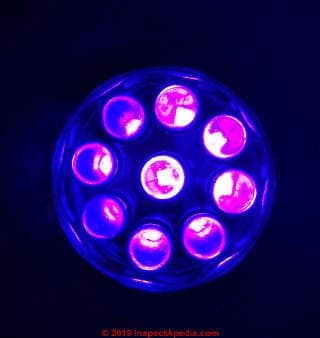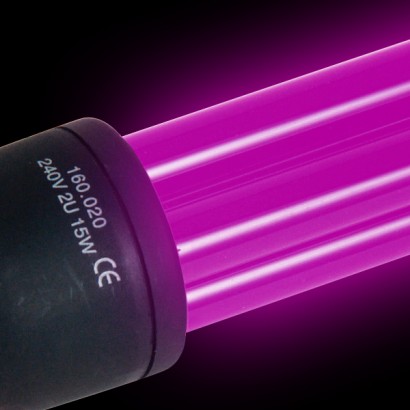

Of the fluorescent minerals, about 80 to 90 % of them fluoresce brighter under Shortwave than under Longwave UV. Somewhat new to the market, LED black light bulbs are some of the best options to consider.

It can last from fractions of a second to weeks. Phosphorescence is a type of fluorescence that continues even after the UV light is removed. While Longwave UV, sometimes referred to as "blacklight", is safe, Shortwave UV can irritate the eyes and burn the skin, so exposure should be controlled and ideally, UV goggles should be worn to prevent eye damage from inadvertently looking at the light source.Īs before stated, UV light directed at certain materials causes fluorescence, originally named after the mineral Fluorite for its blue glow under UV. A nanometer is a unit of length used to define wavelengths of energies in the electromagnetic spectrum, equaling one millionth of a millimeter. Shortwave UV is produced by low pressure mercury arcs, with a wavelength of 254 nanometers, while Longwave, produced by low to high pressure mercury arcs, has a wavelength of from 320 to 400 nanometers. Blacklight lamp emits long-wave UVA radiation and. UV light is divided, at a minimum, into both Shortwave and Longwave radiation. The fluorescence occurs when a chemical (atoms in mineral) absorbs light at one wavelength (UV light wavelength ranges from 10 nm to 400 nm) and re emits light at a different longer wavelength (visible light), having wavelengths in the range of 400700 nanometres (nm). Blacklight (or Ultraviolet Light UV-Light) is electromagnetic radiation with 320-400 nm wavelengths. Both types of light are used in various applications. Introduction: Some materials fluoresce when exposed to ultraviolet (UV) radiation. Ultraviolet light has a range of 280 nm to 400 nm. Visible light has a range of 380 nm to 780 nm. The wavelength ranges from 400 nm to 700 nm. This ability to make the invisible visible makes UV lamps valuable for mineral prospecting, criminal investigations, postal stamp evaluation, etc. Blacklight bulbs emit both visible and ultraviolet (UV) wavelengths of light. To better understand the difference, it’s essential to know what each of the terms means. So in other words, black light is UV light (450-100nm), covering the 400-320nm spectrum. While UV light itself is invisible, it causes many substances to glow or fluoresce in a variety of colors visible to the human eye. Black light is nothing but UVA light, while UV light is basically composed out of UVA, UVB and UVC. Keeping in mind that the use of black lights. UV light thus has a wavelength shorter than that of visible light, and can not be detected by the human eye. Most black lights emit UV light that is in the long-wave UV-A range, which is the safest of all of the wavelengths.

UV light, short for Ultraviolet Light, is a type of light energy making up one part of the electromagnetic spectrum, which spectrum includes gamma and x-rays, UV light, visible light, infrared rays, microwaves, and radio waves, listed in order of decreasing frequency and increasing wavelength. Select also among these links for related topics:


 0 kommentar(er)
0 kommentar(er)
